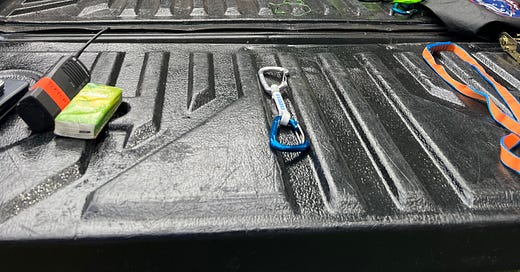On-location medical support involves a lot of downtime, waiting for something to happen, which it rarely does.
So I’m sitting in the back of the Landcruiser, slowly working my way through the latest issue of Journal of Wilderness and Environmental Medicine, when I notice the activity in the bed of the pickup truck next to me. One of the production guys has threaded and unthreaded a rachet three times and is looking increasingly exasperated. He finally looks at the drivers and asks, ‘do you know how to thread a rachet?’ The driver has probably never seen a rachet - tiedowns in Kenya are done the old fashioned way. He notices me looking and him and says, ‘You don’t know how to thread a rachet, do you”
I hop out, thankful to be given a reprieve reading about Sri Lankan Saw-Scaled Viper envenomation. After a bit of chatting it turns out the goal is to crate an attachment point in the bed of the pick-up for the cameraman to clip into while driving in advance of the Kenyan runners we’re working with (and they are filming).
“Usually on big productions we’ll have a rigger” - he shared with me how he had done support for an SAS reality show in Morocco with multiple rope elements.
“We’ll I’m not a filming rigger, but I was a rock climbing guide for a number of years, and a Mountain Rescue rope technician for almost 20, so maybe I can help out”
”Oh thank God. Yes, please”
So commenced a fun morning of playing with their rigging hardware. The first set-up was closer to the cab/roll bar, but the production boss wanted something closer to the tailgate so the camera could get closer and at eye level with the runners. So we re-rigged.
Ultimately the cameraman was nice and secure, didn’t fall out (low bar I know) and they got the shots they wanted.
You never know where and when you’ll need to pull an old tool out of the toolbox. Which is why it’s important to keep them as rust free as possible.








It's crazy how often my rigging skills come into play. The Christmas tree ain't coming of my vehicle!